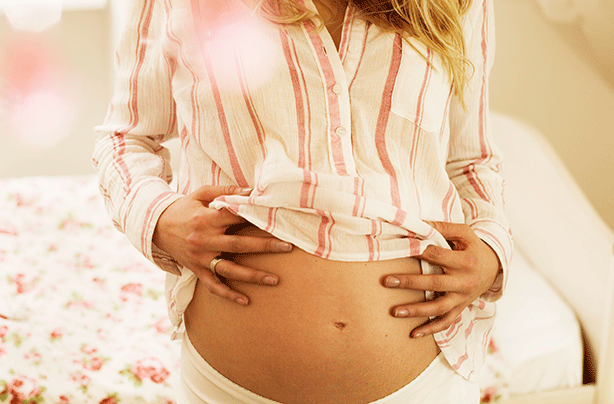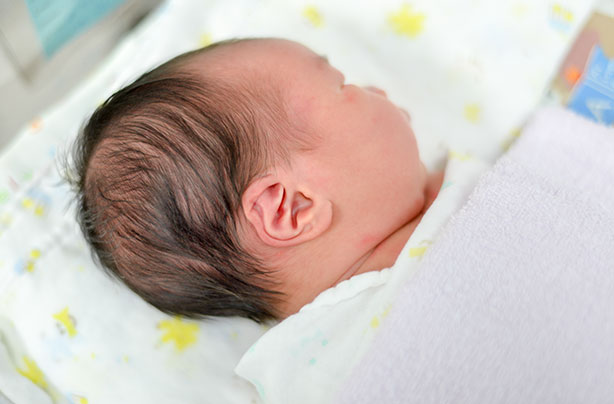Water breaking: This is what it ACTUALLY is when your 'waters break' (and no, it’s not really water)
The technical term for the fluid in your womb is amniotic fluid but here is what it REALLY is…

Water breaking in every Hollywood movie starts with the leading lady shouting ‘my waters have broken', which signifies the start of childbirth. But what does it really mean when your waters break?
It can be anything from a gushing feeling to a hardly-notice-it trickle - when your water breaks, liquid escapes from the womb to show that labour will begin shortly.
Despite the well-known adage, ‘water's broken' is not actually water at all.
The technical term among Drs and midwives is amniotic fluid and it's essentially your baby's pee.
But it's not as disgusting as you might think - your little one bobbing about in their own wee is actually a sign that your baby is growing very healthily.
Speaking to Mamamia podcast, Dr Joseph Sgroi said of water breaking: 'In actual fact, the water surrounding the baby is the baby's urine.'

Within days of conception, the amniotic sac forms and begins to fill with fluid but at the time is mainly water and your own body fluids.
GoodtoKnow Newsletter
Parenting advice, hot topics, best buys and family finance tips delivered straight to your inbox.
From about week 10 of your pregnancy and onwards, your baby's kidneys begin to function, meaning they pass tiny amounts of wee into the amniotic fluid.
'Once they are developed the kidneys will produce urine during the baby's time in the womb... and that's a marker of the baby growing well and being quite healthy', Dr Joseph Sgroi said.
Amniotic fluid is a straw-coloured liquid that fills the amniotic sac throughout the nine months of pregnancy, and acts as a cushion to protect the baby.
Surprisingly, babies also breathe and swallow the liquid to keep up their oxygen supply.
Speaking to the Sun, Dr Daghni Rajasinam, of the Royal College of Obstetricians and Gynaecologists said: 'The amniotic fluid inside helps to cushion the baby from bumps and injury.
'It also helps the baby's skeletal system to develop and maintains a constant temperature for the baby.'
Your amniotic fluid continues to build up throughout your pregnancy until you reach about week 38, then it begins to reduce slightly until your baby is born. When it is time for your baby to be born, your amniotic sac breaks and the fluid comes out of your vagina - also known as water breaking.
Dr Rajasingam added: 'The amniotic sac will break before or during labour and the fluid will drain out through the vagina. This is known as the waters breaking.
'If this happens, women should phone their midwife or the hospital for advice as, without the amniotic fluid, the baby is no longer protected and is at risk of infection.'
Did you know this about water breaking? Let us know in the comments!
Trusted, informative, and empathetic – GoodToKnow is the ultimate online destination for parents. At GoodtoKnow, our mission is 'simple': we're trying to make sense of parenthood. On the site, you'll find everything you need for a happy, healthy family life. Our huge archive of content includes more than 18,000 articles and 1,500 how-to videos. These include expert-backed advice features on parenting, dealing with relationship changes after having a baby, self-care for mums and managing your family finances. We also feature tried-and-tested product reviews and buying recommendations for every stage of family life - from prams and Moses baskets to birthday gifts and top toys.